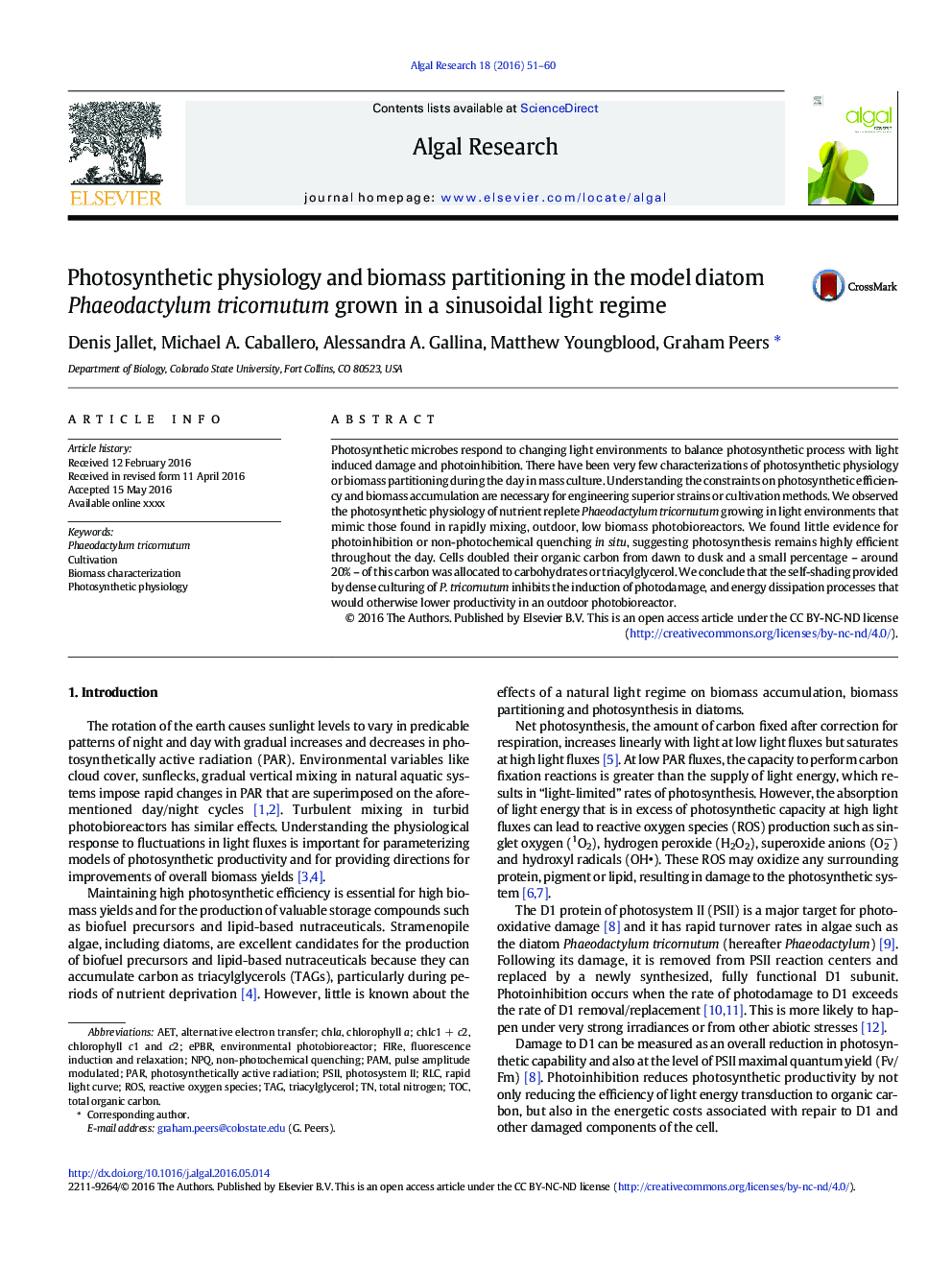| کد مقاله | کد نشریه | سال انتشار | مقاله انگلیسی | نسخه تمام متن |
|---|---|---|---|---|
| 8086663 | 1521814 | 2016 | 10 صفحه PDF | دانلود رایگان |
عنوان انگلیسی مقاله ISI
Photosynthetic physiology and biomass partitioning in the model diatom Phaeodactylum tricornutum grown in a sinusoidal light regime
دانلود مقاله + سفارش ترجمه
دانلود مقاله ISI انگلیسی
رایگان برای ایرانیان
کلمات کلیدی
pulse amplitude modulatedAETNPQTOCPhaeodactylum tricornutumRLCPSIIPAMROS - ROSFire - آتشPhotosynthetically active radiation - تابش فعال فتوسنتزیtriacylglycerol - تری آسیل گلیسرول TAG یا triacylglycerols - تری گلیسرید یا تری آسیل گلیسرولPar - توسطBiomass characterization - خصوصیات زیست تودهNon-photochemical quenching - خنک سازی غیر فتوشیمیاییPhotosystem II - فتوسیستم 2rapid light curve - منحنی نور سریعtotal nitrogen - نیتروژن کاملChla - چلاCultivation - کشتTotal organic carbon - کل کربن آلیChlorophyll a - کلروفیل aReactive oxygen species - گونههای فعال اکسیژن
موضوعات مرتبط
مهندسی و علوم پایه
مهندسی انرژی
انرژی های تجدید پذیر، توسعه پایدار و محیط زیست
پیش نمایش صفحه اول مقاله

چکیده انگلیسی
Photosynthetic microbes respond to changing light environments to balance photosynthetic process with light induced damage and photoinhibition. There have been very few characterizations of photosynthetic physiology or biomass partitioning during the day in mass culture. Understanding the constraints on photosynthetic efficiency and biomass accumulation are necessary for engineering superior strains or cultivation methods. We observed the photosynthetic physiology of nutrient replete Phaeodactylum tricornutum growing in light environments that mimic those found in rapidly mixing, outdoor, low biomass photobioreactors. We found little evidence for photoinhibition or non-photochemical quenching in situ, suggesting photosynthesis remains highly efficient throughout the day. Cells doubled their organic carbon from dawn to dusk and a small percentage - around 20% - of this carbon was allocated to carbohydrates or triacylglycerol. We conclude that the self-shading provided by dense culturing of P. tricornutum inhibits the induction of photodamage, and energy dissipation processes that would otherwise lower productivity in an outdoor photobioreactor.
ناشر
Database: Elsevier - ScienceDirect (ساینس دایرکت)
Journal: Algal Research - Volume 18, September 2016, Pages 51-60
Journal: Algal Research - Volume 18, September 2016, Pages 51-60
نویسندگان
Denis Jallet, Michael A. Caballero, Alessandra A. Gallina, Matthew Youngblood, Graham Peers,